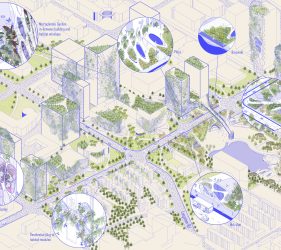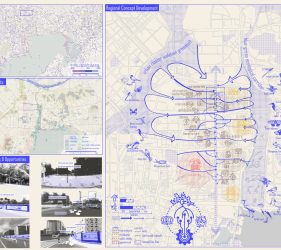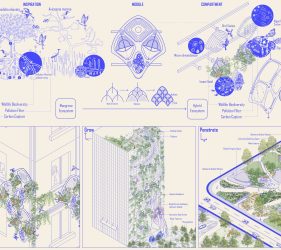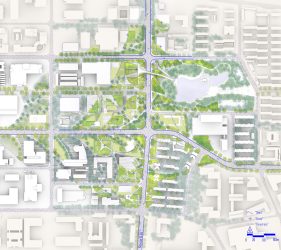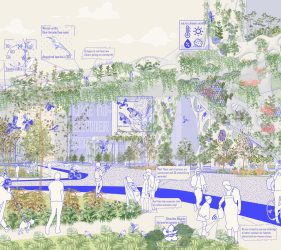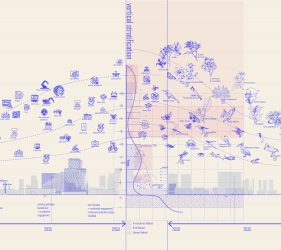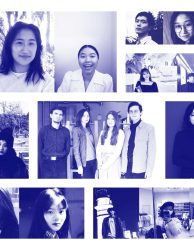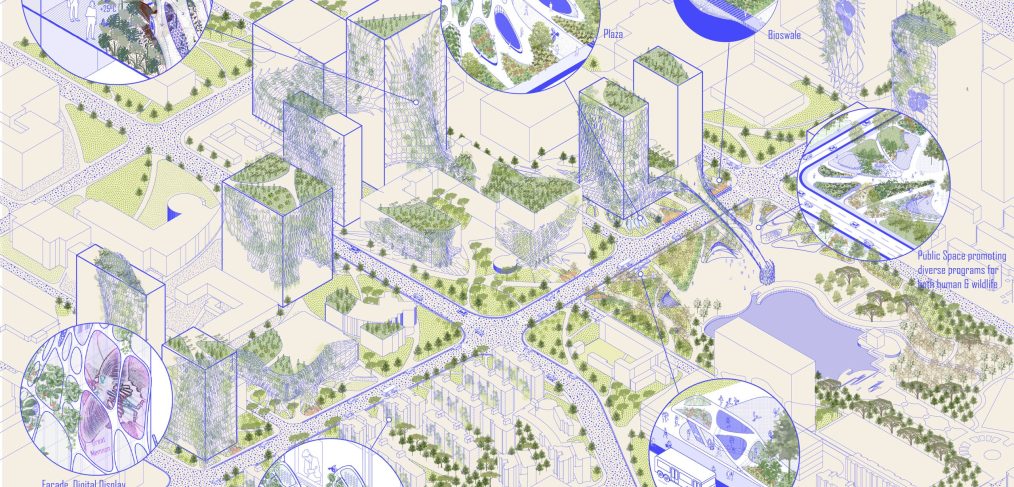
Live together: towards multi-species coexistence
Team
Name: Ziting Wang
Nationality: China
Institution / Company: Harvard Graduate School of Design
Name: Zilan Wang
Nationality: China
Institution / Company: Harvard Graduate School of Design
-BEST PROJECT of Community 2050 Competition | Category: Open
The environmental crisis, “urbanization” of wildlife, and the pandemic outbreak have made us rethink the relationship between people and other forms of life within our cities. The 14th Five-Year Plan through 2035 designated Shenzhen as a pilot city for establishing an ecological civilization. Here, we call for the inclusion of non-human species in the definition of citizenship, as we will move away from a human-centered society toward regenerative coexistence. On the premise of urban densification and biodiversity conflicts, this project explores how urban design can reshape the symbiotic relationship between humans, technology, and nature.
According to the statistics, the high-tech zone’s planned residential and employment populations will be more than doubled. The technology and innovation district is currently separated by the urban cluster isolation greenbelt on the west and the blue-green ecological corridor on the east (Territorial spatial master planning of Shenzhen 2020-2035). The project defines the primary site along the Nanshan Science and Technology Axis of the North high-tech zone, which intersects with residential, enterprises, and open space. It aims to bring biodiversity into the urban core by breaking down the boundaries between cities and nature reserves. It uses the central axis as a pilot site to revolutionize human lifestyles and attitudes towards wildlife. The aim is to introduce biodiversity from the ecological corridor into every feasible space within the urban realm, forming a new urban ecosystem.
Shenzhen is blessed with natural resources that nurture 1/4 of the country’s bird species and thousands of native wildlife species. Among them are the local mangrove ecosystems that support the most biodiverse habitats while acting as bio-filters and carbon sinks. Inspired by the two local species (Kandelia obovata, Avicennia marina), the project designed a habitat module to provide ecosystem services lacking in the densified urban environment. The modules comprise convertible compartments that include bird stations, insect hotels, planters, and algae panels, connected by a supporting frame with internal channels that can collect rainwater for plant irrigation. The production of modules goes through a closed loop process where recycled PET-bottles are processed into raw material for 3D printing filaments. Built-in sensors that detect microclimate humidity, temperature, pollution, and sunlight will maintain the suitability of the organisms’ living environment. The mangrove-inspired morphology is also a metaphor for our vision towards a biodiverse urban system. Through horizontal, vertical, and scale deformation, we develop three measures: “seed,” “grow,” and “penetrate” to address the challenges posed by community segregation, urban densification, and mono-functional open spaces. In addition to creating artificial habitats in areas with high-density vertical development, the modules can absorb carbon emissions, clean air pollution, collect rainwater for recycling, etc.
Residents are encouraged to place modules outside their windows as sky gardens where they can grow their own edible plants and attract insects for natural pollination. The habitable façade wrapped around the high-rise building not only relieves birds from obstruction during flights but also provides microclimate garden platforms for office workers to hang out. Digital screens on the facade will visualize real-time carbon sequester data and species activities that are usually non-visible to humans. The current open space is retrofitted with multiple program spaces as exchange platforms for human-wildlife interactions.
Technology is not limited to benefiting humans but also promoting ecological functions. The emerging industries like new material, information technology, bio-industry will involve in the fabrication of living building materials for habitat modules and construction with 3D printing technology. The combination of sensors, motion trackers, AR will provide data support for maintaining urban ecological diversity and educate people about biodiversity through different sensory experiences and lenses of non-human species, thus reducing the harm caused to them by human ignorance.
#biodiversity #community #ecology and health #environmental sustainability #coexistence
Jury Comments
– Alain Chiaradia
Live together sketches are suggestive of the magic of ecologic civilization aspirations with an understanding of action at distance of the wider reciprocal landscapes that integrate technologies.
– Vicente Guallart
Instead of taming nature and permitting it to grow only within enclosed boxes or grass strips within the urban environment, Live Together proposes an entanglement with the non-human, encouraging chaotic and playful designs to emerge from the biomass. Extra consideration for the web of other species we share the planet with will be needed to chart a course out of environmental catastrophe, and this project is a great step in that direction.
– Zhang Yuxing
The imaginative scheme creates a predictable community ecological scene with light intervention.

